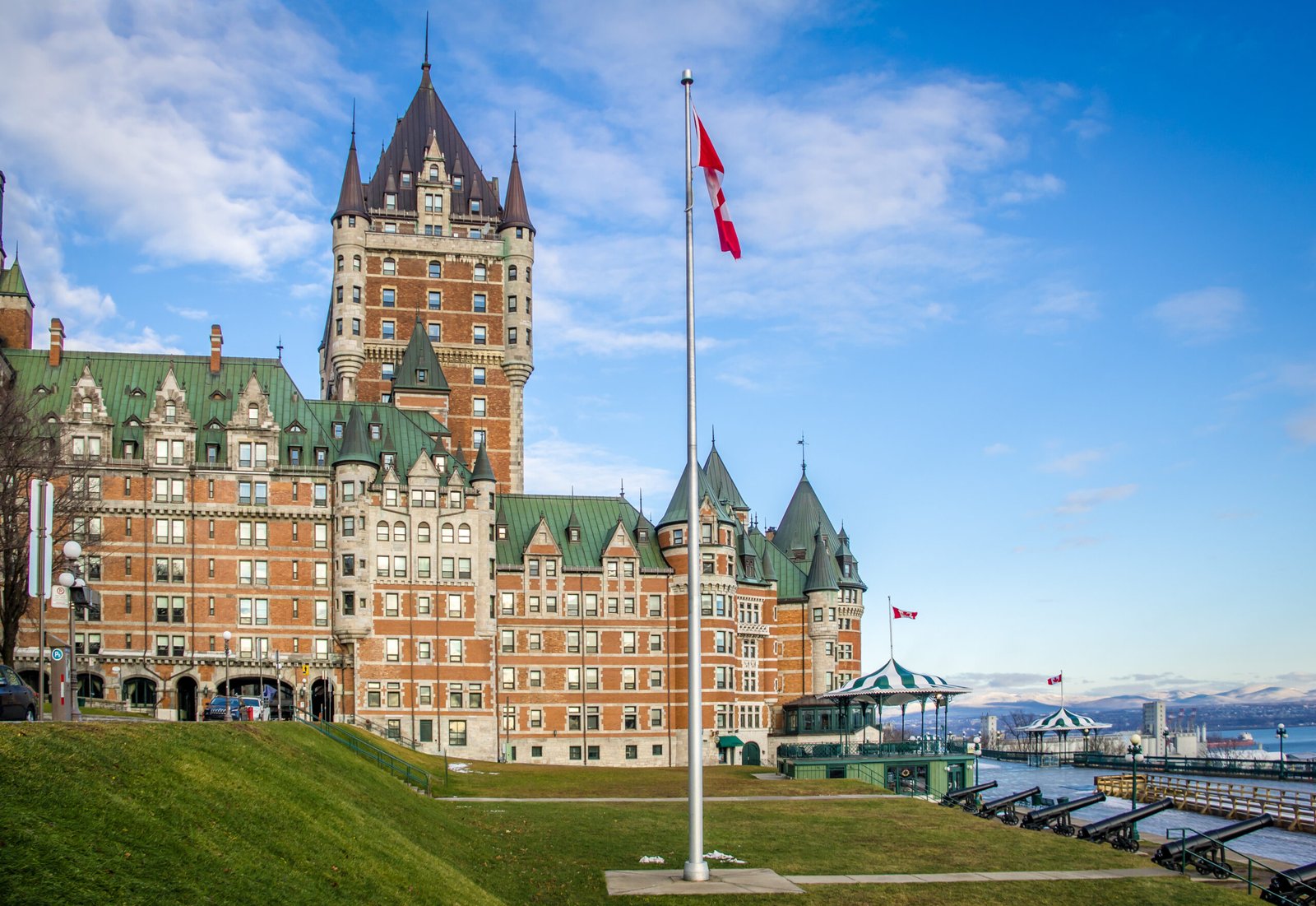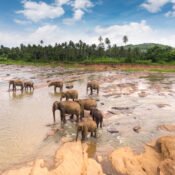45 Things to Know Before Traveling to Canada: Essential Tips for First-Time Visitors

45 Things to Know Before Traveling to Canada: Essential Tips for First-Time Visitors
Canada, with its breathtaking landscapes, vibrant cities, and warm, friendly people, is a dream destination for travelers. But before you set out to explore the Great White North, there are essential things you should know to make your trip smooth and enjoyable. From understanding Canada’s vast geography to learning local customs, this guide covers 45 things to know before traveling to Canada for the first time. Let’s dive into the planning essentials to kick off your adventure!
Table of Contents
1. Planning Essentials
Tip 1: Check Visa and eTA Requirements
Before boarding your flight, ensure you have the right travel documents. Most visitors need an Electronic Travel Authorization (eTA) or a visa to enter Canada. The eTA is a quick online application for eligible travelers, while others may need to visit a consulate for a visa. Check the requirements for your country in advance to avoid any last-minute surprises. Also, ensure your passport is valid for the duration of your stay. To apply for your eTA quickly and securely, visit the official website at Canada.ca/eta and ensure you have your passport and a credit card ready.
Tip 2: Choose the Best Time to Visit
Canada’s vast size means the weather varies significantly depending on when and where you visit. Summer (June to August) is ideal for hiking, festivals, and exploring vibrant cities like Toronto and Vancouver. Winter (December to February) is perfect for skiing, snowboarding, and enjoying the magic of snow-covered landscapes in cities like Mont-Tremblant, Banff, or Whistler. For stunning fall foliage, September and October are unbeatable. Decide what kind of experience you want, and plan accordingly.
Tip 3: Budget for Your Trip
Canada is not the cheapest destination, but careful planning can help you manage your budget. Major cities like Vancouver and Toronto can be pricey, especially during peak seasons. Accommodation, dining, and transportation costs add up quickly. Look for deals on flights and hotels, and take advantage of public transport and affordable dining options like food trucks or casual eateries. Consider using websites like Skyscanner for flight deals and Booking.com to find discounted accommodations. For additional savings, check out package deals on platforms like Expedia.
2. Packing Tips
Tip 4: Pack for the Weather
Canada’s weather can be unpredictable, so packing appropriately is key. If you’re visiting in the winter, bring thermal layers, a warm coat, gloves, and a hat to brave the cold. Summers are warm, but evenings can be cool, so pack a light jacket. Rain is also common in many regions, so a waterproof jacket and sturdy shoes are essential.
Tip 5: Don’t Forget Power Adapters
Canada uses Type A and Type B plugs with a standard voltage of 120V. If your electronics don’t match these standards, pack a universal adapter. This ensures you can keep your devices charged and ready for snapping Instagram-worthy photos.
Tip 6: Bring Essentials for Outdoor Adventures
If you’re planning to explore Canada’s incredible national parks or go on hikes, pack outdoor essentials like a reusable water bottle, sunscreen, bug spray, and comfortable hiking shoes. These items are vital for staying safe and enjoying your adventures.
3. Cultural Tips
Tip 7: Learn Basic French Phrases
While English is the primary language in most provinces, French is widely spoken in Quebec and other Francophone regions. Knowing simple phrases like “Bonjour” (hello), “Merci” (thank you), and “Excusez-moi” (excuse me) can go a long way in showing respect and connecting with locals.
Tip 8: Respect Indigenous Cultures
Canada is home to many Indigenous communities with rich traditions and histories. Take the time to learn about their cultures and visit heritage sites or museums. Always approach these experiences with respect and an open mind. To learn more about Indigenous cultures, visit cities like Vancouver, where you can explore the rich heritage of the Coast Salish peoples; Winnipeg, home to the Canadian Museum for Human Rights and vibrant Indigenous art scenes; and Whitehorse, where First Nations culture is deeply woven into the fabric of Yukon’s history.
Tip 9: Understand Tipping Practices
Tipping is customary in Canada, with 15-20% expected at restaurants. You should also tip taxi drivers, hotel staff, and tour guides. Make sure to budget for this additional cost to avoid any awkward moments.
4. Transportation Tips
Tip 10: Use Public Transportation in Cities
Major Canadian cities like Toronto, Montreal, and Vancouver have efficient and reliable public transit systems, including buses, subways, and trains. Save money and avoid traffic by using these options instead of renting a car. Apps like Transit can help you navigate schedules and routes easily.
Tip 11: Consider Domestic Flights for Long Distances
Canada’s sheer size makes domestic flights a practical option for covering vast distances quickly. For example, flying from Toronto to Vancouver can save you days of travel by car or train. Look for deals on budget airlines like WestJet or Air Canada Rouge to keep costs down.
Tip 12: Know the Rules for Renting a Car
If you plan to drive in Canada, familiarize yourself with the requirements. A valid driver’s license from your home country is usually sufficient, though some provinces may require an International Driving Permit (IDP). Remember, Canadians drive on the right side of the road, and speed limits are in kilometers per hour.
Tip 13: Embrace Scenic Train Rides
Canada’s train journeys offer breathtaking views of its diverse landscapes. The Rocky Mountaineer is a luxury option through the Rocky Mountains, while VIA Rail connects major cities. Even if you’re short on time, a train ride can be a memorable experience.
5. Dining and Food Tips
Tip 14: Try Local Specialties
Canada boasts a rich culinary scene with iconic dishes like poutine (fries with cheese curds and gravy), Nanaimo bars, and butter tarts. Don’t miss regional specialties like fresh seafood on the coasts or maple syrup treats in Quebec.
Tip 15: Understand Restaurant Etiquette
Dining out in Canada is generally relaxed, but there are a few things to know. Water isn’t always served automatically, so ask if you want it. Splitting bills is common, but confirm with your server to avoid confusion.
Tip 16: Enjoy Farmers’ Markets
Farmers’ markets are a great way to experience local flavors and culture. From fresh produce to artisanal goods, markets like Granville Island Public Market in Vancouver or St. Lawrence Market in Toronto offer unique finds and delicious snacks.
6. Outdoor and Adventure Tips
Tip 17: Explore National Parks
Canada is home to stunning national parks, including Banff, Jasper, and Gros Morne. Purchase a Parks Canada Discovery Pass if you plan to visit multiple parks—it grants unlimited access for a year. Check for trail closures and weather conditions before heading out.
Tip 18: Respect Wildlife
Canada’s wilderness is home to amazing wildlife like bears, moose, and wolves. Maintain a safe distance, use binoculars for viewing, and never feed wild animals. Following these guidelines ensures safety for both you and the animals.
Tip 19: Dress in Layers for Outdoor Activities
Weather can change quickly, especially in mountainous regions. Dressing in layers allows you to adapt comfortably to fluctuating temperatures during hikes or other adventures.
7. Money and Connectivity Tips
Tip 20: Exchange Currency Wisely
The official currency in Canada is the Canadian dollar (CAD). To avoid high fees, exchange money at banks or use ATMs instead of airport kiosks. Credit cards are widely accepted, but having some cash on hand is helpful for smaller establishments.
Tip 21: Use Contactless Payments
Canada is highly tech-friendly, and most businesses accept tap-to-pay options. Use contactless-enabled credit cards or mobile payment apps like Apple Pay and Google Pay for quick and convenient transactions.
Tip 22: Stay Connected with Local SIM Cards
If your mobile carrier doesn’t offer affordable international roaming, consider purchasing a local SIM card upon arrival. Companies like Rogers, Bell, and Telus offer prepaid plans with data, making it easy to stay connected while traveling.
8. Other Travel Tips
Tip 23: Download Essential Apps
Enhance your travel experience with helpful apps like:
- Google Maps: For navigation and public transit directions.
- The Weather Network: For accurate weather updates tailored to your location.
- Transit: To plan bus, train, and metro routes.
Tip 24: Embrace Canada’s Diversity
Canada’s multiculturalism is one of its greatest strengths. Visit neighborhoods like Chinatown in Vancouver, Little Italy in Toronto, or Old Montreal to experience the country’s rich diversity through food, art, and festivals.
Tip 25: Plan Ahead for National Holidays
Canada Day (July 1st) and other public holidays, such as Christmas Day (December 25th) or New Year’s Day (January 1st), can cause major attractions and restaurants to close or experience crowds. Plan your itinerary accordingly to make the most of your time.
9. Safety Precautions
Tip 26: Stay Aware of Local Emergency Numbers
In Canada, 911 is the universal emergency number for police, fire, and medical assistance. Familiarize yourself with local emergency contacts, especially if you’re venturing into remote areas where cell service might be unreliable.
Tip 27: Watch for Natural Hazards
Canada’s incredible natural beauty comes with risks, including avalanches, strong currents, and rapidly changing weather. If you’re hiking or camping, always check trail conditions, follow marked paths, and inform someone of your plans.
Tip 28: Protect Yourself from Extreme Weather
From freezing winter temperatures to intense summer heat, Canada’s weather can be extreme. Dress appropriately, stay hydrated, and seek shelter if needed. In winter, watch for ice on roads and sidewalks.
10. Environmental Responsibility
Tip 29: Follow Leave No Trace Principles
Canada’s pristine landscapes depend on travelers practicing sustainable tourism. Carry out all trash, avoid disturbing wildlife, and stay on designated trails. Respect the environment so future generations can enjoy it too.
Tip 30: Reduce Your Carbon Footprint
Opt for eco-friendly travel options like public transit, biking, or walking whenever possible. Many cities also have electric vehicle charging stations if you’re renting a car.
Tip 31: Be Mindful of Fire Safety
Wildfires are a concern in some parts of Canada, especially during dry summers. Follow local fire restrictions and avoid activities that could spark fires, such as unattended campfires or discarded cigarettes.
11. Shopping and Souvenirs
Tip 32: Explore Local Markets
Canada’s markets are treasure troves for unique souvenirs. Visit places like Vancouver’s Granville Island or Toronto’s Kensington Market for handcrafted items, Indigenous art, and specialty foods.
Tip 33: Know Duty-Free Shopping Rules
If you’re traveling internationally, take advantage of duty-free shops at airports. Be aware of limits on alcohol, tobacco, and other items to avoid customs issues when returning home. Check these limits by visiting the official Canadian Border Services Agency website at cbsa-asfc.gc.ca.
Tip 34: Invest in Timeless Canadian Souvenirs
Popular souvenirs include maple syrup, Inuit carvings, and Hudson’s Bay blankets. These items reflect Canada’s culture and heritage, making them meaningful mementos.
12. Adventure and Outdoor Activities
Tip 35: Try Winter Sports
Canada is a paradise for winter sports enthusiasts. Skiing, snowboarding, ice skating, and dog sledding are popular activities in places like Whistler, Banff, Mont-Tremblant, and Quebec City. Even if you’re not a pro, there are plenty of options for beginners.
Tip 36: Go Whale Watching
Coastal provinces like British Columbia and Nova Scotia offer incredible opportunities for whale watching. Look out for humpback, orca, and gray whales on guided tours during the summer months.
Tip 37: Experience Unique Outdoor Adventures
Beyond the usual hikes and boat rides, Canada offers adventures like kayaking in the Bay of Fundy or zip-lining in the Rocky Mountains. Add these thrilling experiences to your itinerary for unforgettable memories.
13. Time Management
Tip 38: Account for Multiple Time Zones
Canada spans six time zones, so plan accordingly if you’re traveling across the country. Apps like World Clock can help you keep track of local times to avoid scheduling conflicts.
Tip 39: Maximize Daylight Hours
In summer, northern regions like Yukon and Nunavut enjoy long daylight hours, while winter days can be short in many areas. Adjust your activities to make the most of available daylight.
Tip 40: Avoid Overpacking Your Itinerary
Canada’s attractions are spread out, so trying to see too much in a short time can lead to burnout. Focus on a few key destinations and leave room for spontaneous exploration.
14. Photography and Memories
Tip 41: Capture Iconic Landmarks
Canada is full of Instagram-worthy spots such as Lake Louise, Lake Moraine, Niagara Falls, and the CN Tower. Don’t forget to charge your camera and bring extra memory cards for all the stunning shots.
Tip 42: Be Respectful When Photographing People
If you want to take pictures of locals or Indigenous communities, always ask for permission first. Respect privacy and cultural sensitivities to ensure a positive experience.
Tip 43: Keep a Travel Journal
Document your experiences with a travel journal. It’s a great way to remember the small details of your trip, from the names of restaurants to personal reflections on memorable moments.
15. Canadian Festivals and Hidden Gem for an Unforgettable Trip
Tip 44: Immerse Yourself in Canadian Festivals
Immerse yourself in Canadian culture by joining local festivals. Festivals are a great way to connect with local culture. Whether it’s the Calgary Stampede or the Toronto International Film Festival, these events offer unique glimpses into Canadian life. From the Quebec Winter Carnival to the Vancouver International Wine Festival, these events showcase Canada’s traditions and lively spirit. Be sure to check schedules and book tickets early.
Tip 45: Explore Beyond the Tourist Spots
Venture off the beaten path to discover hidden gems. Visit Tofino on Vancouver Island for serene beaches, explore the Magdalen Islands in Quebec for breathtaking views, or hike the Cape Breton Highlands in Nova Scotia. These lesser-known destinations provide unforgettable experiences without the crowds.
Conclusion
Traveling to Canada is an incredible experience, offering a perfect mix of natural wonders, vibrant cities, and diverse cultures. With these 45 things to know before traveling to Canada, you’re now equipped with the essential tips to plan, pack, and explore like a pro. From navigating entry requirements and embracing the country’s multicultural charm to discovering hidden gems and staying safe, these insights will help you make the most of your trip.
Whether you’re gazing at the Northern Lights, skiing in the Rockies, or indulging in poutine, Canada has something for everyone. So, start packing, and get ready for an unforgettable adventure in the Great White North!
For more details and comprehensive insights into Canada’s top destinations, visit our blog posts:
- The 15 Best Places To Visit In Canada: Your Ultimate Guide To Canada’s Must-See Destinations
- Hidden Gems In Canada: Discover 10 Must-Visit Secret Spots Off The Beaten Path
If you’re looking for a more detailed visual overview of Canada, check out our YouTube videos, “Top 10 Best Places to Visit in Canada – Ultimate Travel Guide” and “Canada Unveiled: Facts That Even Most Canadians Don’t Know!“.


For more travel guides on America, check out our posts:
- Best Places To Visit In North America: Top 10 Must-See Destinations
- Best Places To Visit In South America: Top 10 Must-See Destinations
- Best Places To Visit In Mexico: Top 15 Must-See Destinations For Travelers
Trending Travel Destinations
- 15 Best Places To Visit In Portugal: A Complete Guide To Top Destinations, Attractions & Local Insights
- Best Places To Visit In Italy: Top 15 Must-See Destinations
- Best Places To Visit In Malaysia: Top 15 Must-See Destinations For First-Time Travelers
- Best Places To Visit In Thailand: Top 15 Unmissable Destinations, Travel Tips & Local Gems
Don’t forget to follow us on YouTube, Instagram, Facebook, and Twitter for more travel tips and inspiration.
If this post was helpful, check out our blog for more travel guides and tips!





